I photographed some of the cutest, fuzzy Bee Flies in the world this week nectaring on Rabbitbrush and Curlycup Gumweed in the Stansbury Mountains of the West Desert.
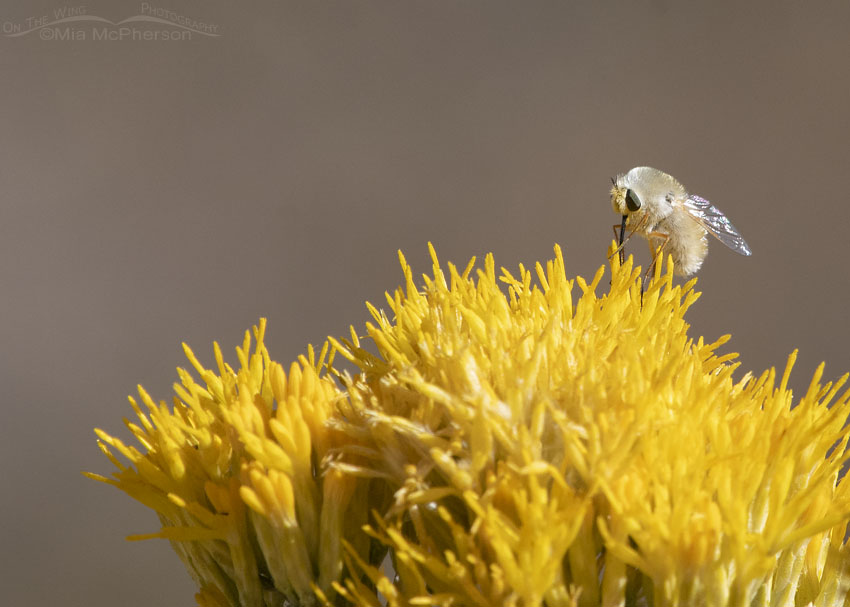 Bee Fly nectaring on Rabbitbrush – Possibly Bombyliinae – Anastoechus? – Nikon D500, f10, 1/1000, ISO 640, Nikkor 500mm VR with 1.4x TC, natural light
Bee Fly nectaring on Rabbitbrush – Possibly Bombyliinae – Anastoechus? – Nikon D500, f10, 1/1000, ISO 640, Nikkor 500mm VR with 1.4x TC, natural light
I submitted a few photos of the Bee Flies to BugGuide.net hoping for on ID on the Bee Flies I’ve photographed but so far all I know is that they belong to the subfamily Bombyliinae and they may belong to the Genus Anastoechus.
This Bee Fly was nectaring on rabbitbrush next to a road, I photographed it while photographing butterflies that were also nectaring on the rabbitbrush.
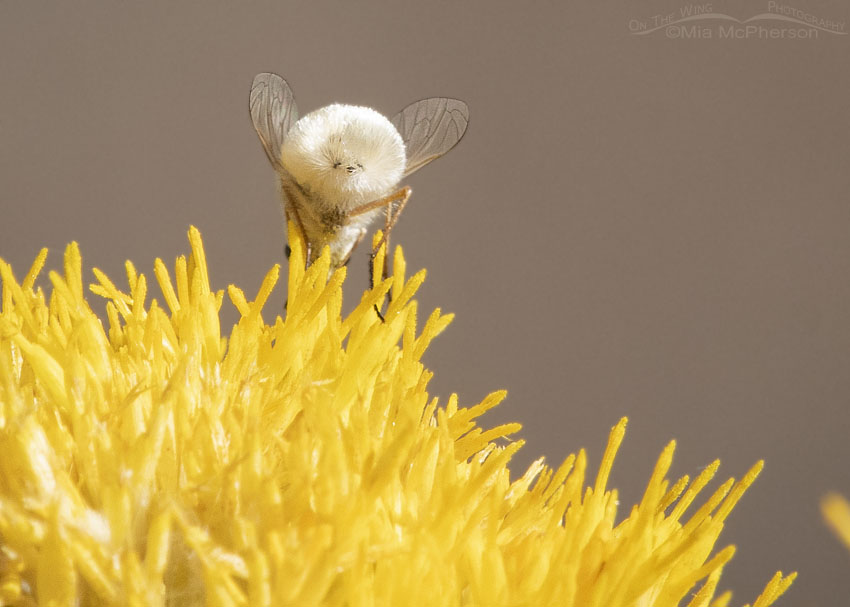 Bee Fly butt – Nikon D500, f10, 1/1000, ISO 640, Nikkor 500mm VR with 1.4x TC, natural light
Bee Fly butt – Nikon D500, f10, 1/1000, ISO 640, Nikkor 500mm VR with 1.4x TC, natural light
Even their fuzzy little butts are cute. I kind of see a little hedgehog face in the Bee Fly’s behind in this photo.
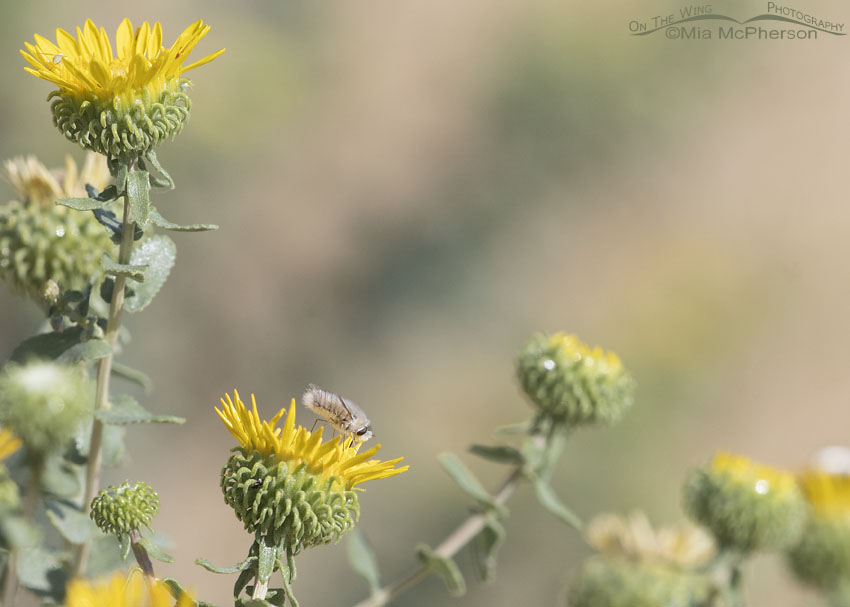 Curlycup Gumweed with a Bee Fly – Nikon D500, f7.1, 1/2500, ISO 640, Nikkor 500mm VR, natural light
Curlycup Gumweed with a Bee Fly – Nikon D500, f7.1, 1/2500, ISO 640, Nikkor 500mm VR, natural light
The Bee Flies are small, have six long, thin legs, two pairs of wings, big eyes, short antennae and long, stiff proboscises. Bee Flies aren’t bees so they do not sting, the adults feed on pollen and nectar and they are important as pollinators.
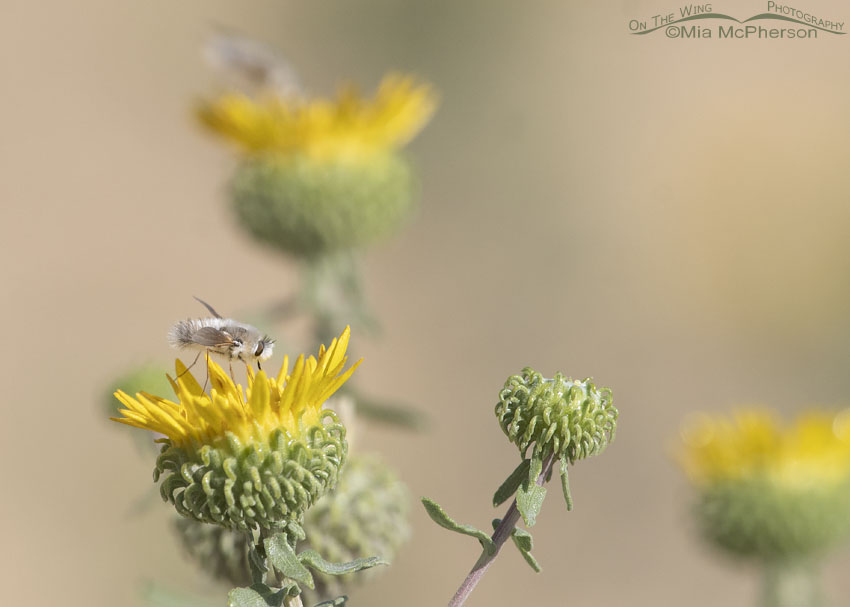 Bee Fly nectaring on Curlycup Gumweed – Nikon D500, f7.1, 1/3200, ISO 640, Nikkor 500mm VR with 1.4x TC, natural light
Bee Fly nectaring on Curlycup Gumweed – Nikon D500, f7.1, 1/3200, ISO 640, Nikkor 500mm VR with 1.4x TC, natural light
As cute as these Bee Flies are I found out through my research on them that they hover over nests of ground nesting bees and deposit one egg into the burrow where the fly larva feeds on pollen and then the bee larvae itself. Go figure, a parasite as cute as a child’s stuffed animal!
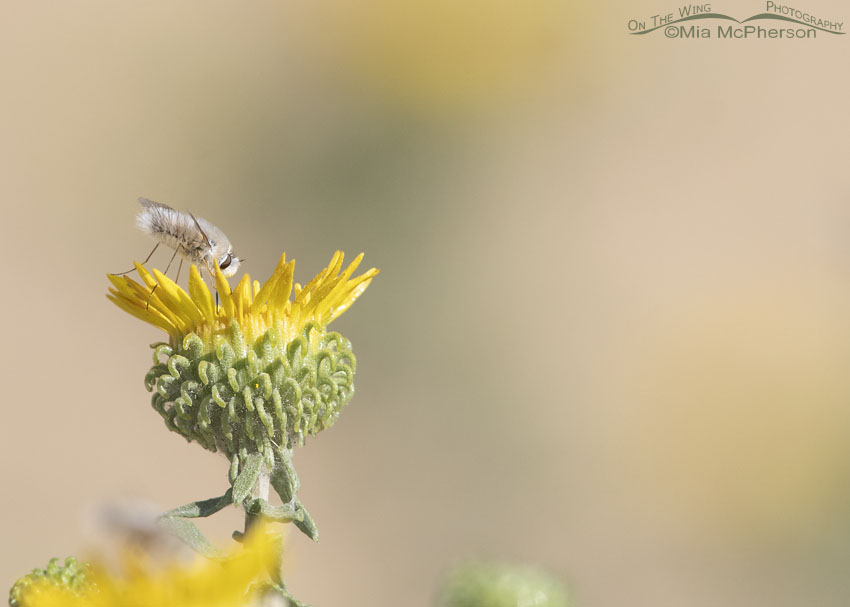 Bee Fly on Curlycup Gumweed – Nikon D500, f7.1, 1/2500, ISO 640, Nikkor 500mm VR with 1.4x TC, natural light
Bee Fly on Curlycup Gumweed – Nikon D500, f7.1, 1/2500, ISO 640, Nikkor 500mm VR with 1.4x TC, natural light
I know that after I took these photos I wondered if it wasn’t time for me to start carrying my macro lens along when I go to the Stansbury Mountains of the West Desert to try to get macro shots of these cute little Bee Flies. Perhaps I should!
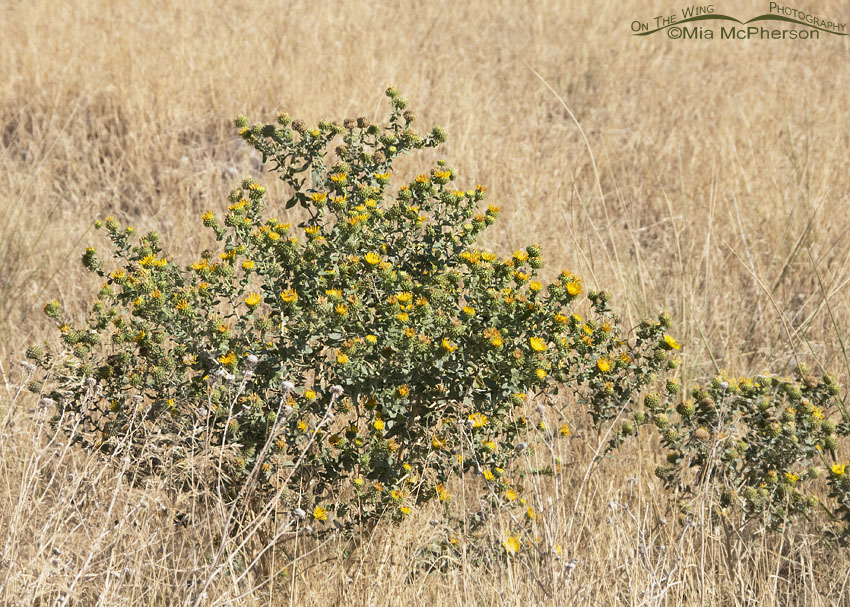 Curlycup Gumweed next to a road – Nikon D810, f10, 1/1250, ISO 500, Nikkor 18-200mm VR at 95mm, natural light
Curlycup Gumweed next to a road – Nikon D810, f10, 1/1250, ISO 500, Nikkor 18-200mm VR at 95mm, natural light
Curlycup Gumweed (Grindelia squarrosa) is a new wildflower to my site so I thought I should go into more detail about it. This is a native plant that favors dry areas such as roadsides, dry prairies, rangelands, and abandoned croplands. It will also grow in moist soils that lack other vegetation. It stores selenium and can be toxic to domestic cattle, sheep and horses. The plants grow from one to three feet tall, the one in the photograph above was perhaps about 2 1/2 feet tall. It is blooming like crazy in the West Desert this time of the year.
Even when there aren’t birds nearby it seem there is always something to photograph when I look around.
Nature is amazing…
Life is good.
Mia
Click here to see more of my flower, shrub and tree photos. Click here to see my insect and spider galleries.


I really like the first image of the Bee Fly. This is new to me, a long-time insect watcher. Thanks Mia.
The cutest little parasite of all.
And yes, my greedy self says please carry your macro lens with you. This is a gorgeous series.
Very interesting! Being a dog person, I’m seeing a chihuahua mix in the bee butt with the wings standing in for the ears.
Bee fly, not bee (darn you, autocorrect!)
I agree with Cindy’s comment. Never heard of the bee fly, and they are cute. Thanks for showing them.
Hi sweetie! Such cute little bugs! You sure get beautiful close ups! I so enjoy not knowing what you will photo next! love mom
Due to Haley’s entomology class this fall at the U I am looking more at insects. I saw this same fly for the first time a few weeks ago in Midway, Ut. They are adorable, hard to photograph with the macro, they flit around. I can ask her if she know what it is or she can ask her professor.
April, I’d sure love to know so please!
Well wonders never cease! I have never heard of a bee fly but it does look like he’s made out of chenille, pipe cleaner. What a cute rear end he has.
Thanks for making me smile today Mia.
I first met curlycup gumweed in the Cimarron Grasslands in southwestern Kansas. It already had dried and gone to seed, but it still was beautiful. It’s nice to see it again, complete with blooms.